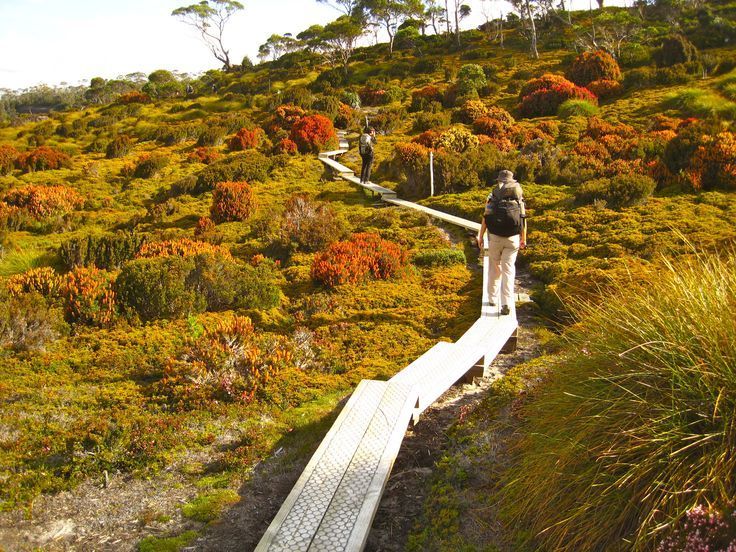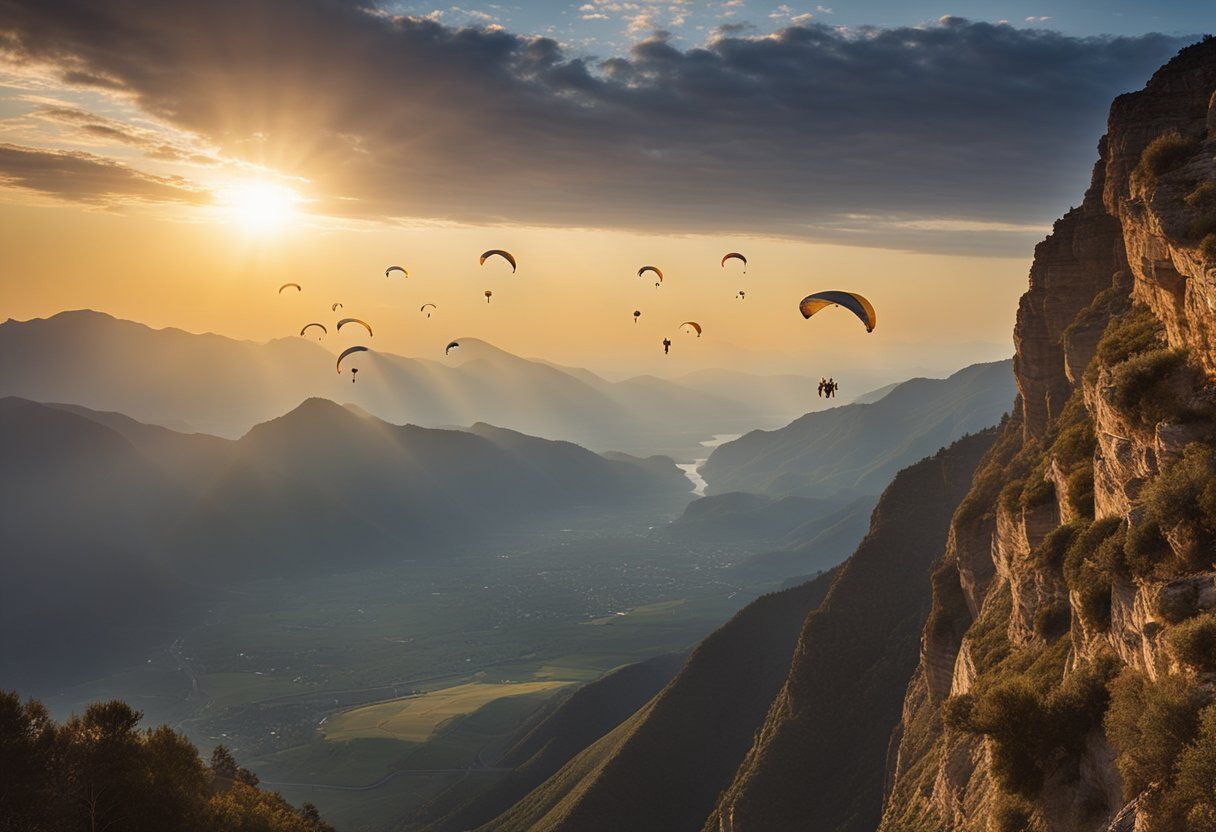To share
Uncover the wonders of Tasmania's Overland Track. From ancient rainforests to rugged mountains, this iconic trail offers a true wilderness experience. Discover why it's a must-do for outdoor enthusiasts worldwide.

1. Introduction to the Overland Track
Location and overview
The Overland Track is a renowned hiking trail located in the heart of Tasmania, Australia. Stretching approximately 65 kilometers from Cradle Mountain to Lake St Clair, this iconic trek takes hikers through the diverse landscapes of the Tasmanian Wilderness World Heritage Area. The track typically takes 5-6 days to complete, offering a challenging yet rewarding experience for outdoor enthusiasts.
Historical significance
The Overland Track has a rich history dating back to the early 20th century. Originally used by indigenous Australians and later by miners and trappers, the track was officially established as a walking route in the 1930s. Since then, it has become one of Australia's most famous multi-day hikes, attracting thousands of visitors each year who seek to explore Tasmania's pristine wilderness.
Flora and fauna highlights
The Overland Track showcases Tasmania's unique biodiversity. Hikers can expect to encounter a variety of plant species, including ancient rainforests, alpine meadows, and button grass moorlands. Wildlife enthusiasts may spot native animals such as wombats, wallabies, and Tasmanian devils. The track is also home to numerous bird species, including the endangered wedge-tailed eagle.
2. Preparing for the Adventure
Essential gear and equipment
Proper preparation is crucial for a successful Overland Track experience. Essential items include:
- High-quality, waterproof hiking boots
- Warm and waterproof clothing (layered approach recommended)
- Sleeping bag rated for low temperatures
- Tent or booking hut accommodation in advance
- First aid kit and personal medications
- Navigation tools (map, compass, and/or GPS device)
- Sufficient food and water supplies
- Cooking equipment and utensils
Remember: Pack light but ensure you have all necessary items for safety and comfort.
Physical fitness requirements
The Overland Track is a moderately difficult hike that requires a good level of physical fitness. Hikers should be prepared for:
- Long days of walking (up to 8 hours per day)
- Carrying a heavy backpack (15-20 kg)
- Navigating varied terrain, including steep ascents and descents
- Potential adverse weather conditions
It is advisable to engage in regular cardiovascular exercise and strength training in the months leading up to the trek. Practice hikes with a loaded backpack can also help prepare your body for the challenges ahead.
Best time to undertake the trek
The Overland Track can be hiked year-round, but each season offers a unique experience:
- Summer (December to February): Most popular time, with milder weather and longer daylight hours. Booking is essential during this peak season.
- Autumn (March to May): Cooler temperatures and beautiful fall colors. Less crowded than summer.
- Winter (June to August): Challenging conditions with snow and ice. Suitable for experienced hikers with proper equipment.
- Spring (September to November): Wildflowers bloom, and waterfalls are at their most impressive. Weather can be unpredictable.
Consider your skill level, preferences, and availability when choosing the best time for your Overland Track adventure. Regardless of the season, always check weather forecasts and track conditions before embarking on your journey.
3. The Route: From Cradle Mountain to Lake St Clair
Day-by-day itinerary
The Overland Track is a 65-kilometer journey that typically takes 6 days to complete. Here's a breakdown of the typical itinerary:
- Day 1: Ronny Creek to Waterfall Valley (10.7 km)
- Day 2: Waterfall Valley to Lake Windermere (7.8 km)
- Day 3: Lake Windermere to Pelion (16.8 km)
- Day 4: Pelion to Kia Ora (8.6 km)
- Day 5: Kia Ora to Windy Ridge (9.6 km)
- Day 6: Windy Ridge to Lake St Clair (9 km)
This itinerary allows for a steady pace and ample time to appreciate the surroundings. Some hikers choose to extend their trip by adding side trips or rest days.
Key landmarks and natural wonders
The Overland Track is renowned for its diverse landscapes and unique natural features. Some notable landmarks include:
- Cradle Mountain: The iconic starting point, offering breathtaking views of the surrounding valleys.
- Barn Bluff: A distinctive peak visible for much of the northern section of the track.
- Mount Ossa: Tasmania's highest mountain, standing at 1,617 meters.
- The Acropolis: A dramatic rock formation in the Du Cane Range.
- D'Alton and Fergusson Falls: Beautiful waterfalls accessible via side trips.
- Lake St Clair: Australia's deepest freshwater lake, marking the end of the track.
Camping sites and hut accommodations
The track offers a mix of camping areas and basic hut accommodations. The main options include:
- Waterfall Valley Hut
- Lake Windermere Hut
- Pelion Hut
- Kia Ora Hut
- Bert Nichols Hut at Windy Ridge
These huts provide shelter and sleeping platforms, but hikers should always carry a tent as backup. Camping is allowed in designated areas near the huts.
4. Challenges and Rewards
Weather conditions and terrain difficulties
The Overland Track presents several challenges:
- Unpredictable weather: Conditions can change rapidly, with potential for snow even in summer.
- Varied terrain: The track includes steep ascents, muddy sections, and rocky areas.
- River crossings: Some sections require fording streams, which can be dangerous after heavy rain.
Proper preparation, including appropriate gear and physical conditioning, is essential for tackling these challenges safely.
Wildlife encounters
The Overland Track offers opportunities to observe Tasmania's unique wildlife:
- Wombats: Often seen grazing near campsites.
- Tasmanian devils: Nocturnal and shy, but occasionally spotted.
- Platypus: Sometimes visible in lakes and streams along the route.
- Various bird species: Including the endemic green rosella and Tasmanian thornbill.
While wildlife encounters can be exciting, it's important to maintain a respectful distance and not feed the animals.
Scenic vistas and photo opportunities
The track is a photographer's dream, offering numerous scenic vistas:
- Cradle Mountain reflected in Dove Lake
- Panoramic views from the summit of Mount Ossa
- The ethereal beauty of the buttongrass plains
- Misty mornings over the alpine lakes
- The ancient Gondwanan rainforest in the Pine Valley
To make the most of these opportunities, consider carrying a lightweight tripod and extra batteries for your camera.
"The Overland Track is not just a walk through the wilderness; it's a journey through time, offering glimpses into Tasmania's ancient geological and ecological history."
5. Conservation and Environmental Impact
Leave No Trace principles
The Overland Track is a pristine wilderness area, and it's our responsibility to keep it that way. Adherence to Leave No Trace principles is crucial for preserving the natural beauty of this iconic trail.
These principles include:
- Plan ahead and prepare
- Travel and camp on durable surfaces
- Dispose of waste properly
- Leave what you find
- Minimize campfire impacts
- Respect wildlife
- Be considerate of other visitors
By following these guidelines, we ensure that future generations can enjoy the same unspoiled landscapes we experience today.
Protected species and habitats
The Overland Track is home to numerous protected species and delicate habitats.
Hikers may encounter:
- Tasmanian devils
- Platypuses
- Wombats
- Various bird species, including the endangered orange-bellied parrot
It's essential to maintain a respectful distance from wildlife and avoid disturbing their natural habitats. The alpine and sub-alpine vegetation along the track is particularly sensitive to trampling, so staying on designated paths is crucial.
Sustainable tourism practices
Sustainable tourism practices are vital for the long-term preservation of the Overland Track.
These include:
- Using designated campsites and huts
- Carrying out all rubbish
- Using biodegradable soap and detergent
- Minimizing water usage
- Supporting local communities and businesses
By adopting these practices, we contribute to the conservation of this unique ecosystem while enjoying its natural wonders.
6. Safety Considerations
Emergency preparedness
Being prepared for emergencies is crucial when tackling the Overland Track.
Key aspects of emergency preparedness include:
- Carrying a comprehensive first aid kit
- Having emergency shelter and warm clothing
- Bringing extra food and water
- Knowing emergency evacuation routes
- Informing someone of your itinerary before departure
It's also advisable to purchase travel insurance that covers remote area evacuations.
Navigation and communication tools
Reliable navigation and communication tools are essential for a safe journey on the Overland Track.
These include:
- Topographic maps and a compass
- GPS device with spare batteries
- Personal locator beacon (PLB)
- Satellite phone or emergency communication device
While the track is well-marked, weather conditions can change rapidly, making navigation challenging. Familiarity with these tools before the trek is crucial.
First aid and health precautions
Proper first aid knowledge and health precautions are vital for a safe Overland Track experience.
Consider the following:
- Obtain proper first aid training before the trek
- Carry any necessary personal medications
- Be aware of potential allergies and how to manage them
- Stay hydrated and protect against sunburn
- Be prepared for hypothermia, even in summer months
It's also important to be aware of your physical limitations and to pace yourself accordingly throughout the journey.
"Safety isn't expensive, it's priceless. Prepare well, stay alert, and enjoy the breathtaking beauty of the Overland Track responsibly."
7. Alternative Routes and Side Trips
Optional summit climbs
The Overland Track offers several opportunities for adventurous hikers to tackle optional summit climbs. These side trips provide breathtaking panoramic views and a chance to challenge yourself further. Some popular summit options include:
- Mount Ossa: Tasmania's highest peak at 1,617 meters
- Cradle Mountain: An iconic Tasmanian landmark
- Barn Bluff: Offering stunning views of the surrounding wilderness
These climbs typically add 2-4 hours to your day's journey, so plan accordingly and assess weather conditions before attempting.
Waterfalls and hidden gems
The Overland Track is home to numerous waterfalls and lesser-known natural wonders. Taking the time to explore these hidden gems can enhance your trekking experience. Some noteworthy spots include:
- D'Alton and Fergusson Falls: A short detour from the main track
- Pine Valley: A serene forested area perfect for a peaceful break
- Hartnett Falls: One of Tasmania's most beautiful waterfalls
Remember to allocate extra time in your itinerary if you wish to explore these areas thoroughly.
Extending your journey beyond Lake St Clair
For those seeking an extended adventure, the journey doesn't have to end at Lake St Clair. Consider these options to prolong your Tasmanian experience:
- Narcissus Hut to Cynthia Bay: A picturesque 17.5 km walk along Lake St Clair
- The Labyrinth: A challenging but rewarding overnight side trip
- Mount Rufus Circuit: A full-day walk offering diverse landscapes and vegetation
These extensions allow you to immerse yourself further in Tasmania's natural beauty and potentially avoid the crowds at the main track's end.
Summary
The Overland Track in Tasmania offers more than just a linear hiking experience. With numerous summit climbs, hidden waterfalls, and extension options, trekkers can customize their journey to suit their preferences and fitness levels. Whether you choose to stick to the main track or explore the various side trips, the Overland Track promises an unforgettable adventure in one of Australia's most pristine wilderness areas.
Frequently Asked Questions
How long does it take to complete the Overland Track?
The Overland Track typically takes 5-6 days to complete, covering approximately 65 kilometers. However, the duration can vary depending on your pace, fitness level, and whether you choose to include side trips or summit climbs.
Do I need a permit to hike the Overland Track?
Yes, a permit is required to hike the Overland Track. During the peak season (October 1 to May 31), you must book in advance and pay a fee. In the off-season, a free permit is still required but can be obtained at the track's entrance.
Are there guided tours available for the Overland Track?
Yes, several companies offer guided tours of the Overland Track. These can be beneficial for those who prefer a structured experience or are less confident in their navigation skills. Guided tours often include equipment, meals, and transportation to and from the track.
What wildlife might I encounter on the trek?
The Overland Track is home to diverse wildlife.
You may encounter:
- Wombats
- Wallabies
- Tasmanian devils (rare sightings)
- Various bird species, including currawongs and rosellas
- Snakes (be cautious during warmer months)
Remember to observe wildlife from a distance and never feed the animals.
How difficult is the Overland Track compared to other famous hikes?
The Overland Track is considered moderately difficult. It requires a good level of fitness and proper preparation.
Compared to other famous hikes:
- It's generally less challenging than the Kokoda Track in Papua New Guinea
- It's more difficult than the Milford Track in New Zealand due to its longer duration and more variable weather conditions
- It's similar in difficulty to the West Coast Trail in Canada, though the terrain differs
The track's difficulty can increase significantly in poor weather conditions, so proper gear and preparation are essential.




